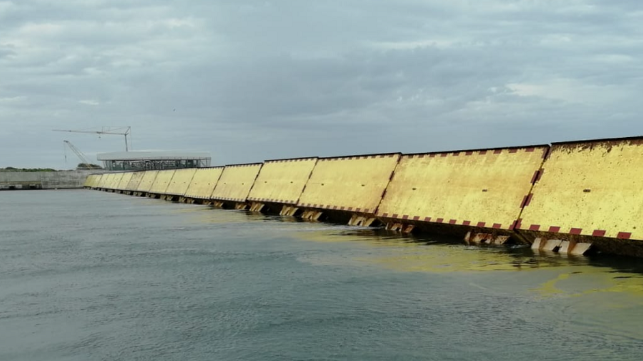Milestone in Venice: Sea Barrier Prevents Flooding for the First Time

Venice's long-awaited sea barrier system was deployed successfully for the first time on Saturday, holding back the tide and keeping the city flood-free.
Venice has long been prone to flooding: its ground level is gradually subsiding, sea levels are rising and high wind events tend to drive waves into the lagoon and onto the city's waterfront. Fully 85 percent of the city was flooded by a near-record 74-inch high tide last November, leading to renewed calls for action on a flood protection system.
Venice's MOSE (Moses) system was designed to counteract tidal flooding. It consists of 78 mobile flood gates spanning the Venetian Lagoon's Lido, Malamocco, and Chioggia inlets. When the gates are pumped out with compressed air and floated to the surface, they can hold back tides of up to three meters above baseline.
MOSE's design was finalized in 1992, and construction began in 2003 for an expected 2011 completion. That date slipped to 2018, then 2020. The first successful full test was completed this July, and it was activated for a flooding event for the first time on Saturday.
In addition to delays, the $6.5 billion project has been dogged by reports of corruption. In 2014, 35 people were arrested in connection with an alleged scheme to skim public funds from the project and use it for the purpose of bribery. 35 people were arrested, including the region's governor and the mayor.

that matters most
Get the latest maritime news delivered to your inbox daily.
In addition, as seas are rising faster than its designers anticipated, MOSE's three meters of flood protection may not be enough, according to UN cultural protection agency UNESCO. “The planned mobile barriers might be able to avoid flooding for the next few decades, but the sea will eventually rise to a level where even continuous closures will not be able to protect the city from flooding,” UNESCO wrote in 2011.
“The solution of MOSE is obsolete," said Luigi D’Alpaos, professor emeritus of hydraulics at the University of Padova, speaking to The Washington Post last year. “MOSE might work tranquilly and without issues for 10 to 20 years. But then problems will arise, and it will be necessary to take other actions.”
